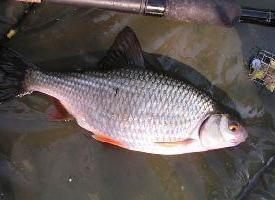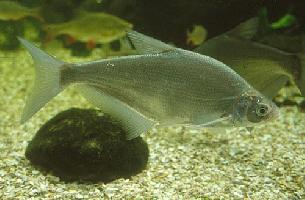
Súlyok és méretek
| Hossz | 12 cm |
|---|
Biológiai adatok
| Élettartam | 8-tól 10-ig éves |
|---|
Állatleírás
The Flying Fox, scientifically known as Epalzeorhynchos kalopterus, is a captivating species of freshwater fish that belongs to the Cyprinidae family. This species is not only renowned for its distinctive appearance but also for its unique behavior and habitat preferences, making it a subject of interest among aquarists and ichthyologists alike.Originating from the lush, tropical waters of Southeast Asia, including parts of Borneo, Sumatra, and the Malay Peninsula, the Flying Fox thrives in streams and rivers that offer a dynamic environment. The natural habitats of these fish are characterized by clear, moderately flowing waters, often with a substrate composed of sand, pebbles, and scattered driftwood, providing ample hiding spots and breeding grounds.
Physically, the Flying Fox is a sight to behold, with a sleek, elongated body that can grow up to 6 inches (15 cm) in length in captivity, though they are often smaller in the wild. Their color palette is a blend of art and nature, featuring a dark, almost black body contrasted with a striking horizontal orange to yellow stripe running from the tip of the nose to the base of the tail. This stripe is a key identification feature, setting them apart from similar species. Their fins are typically translucent with hints of black, and their large, expressive eyes are adept at spotting food and predators alike.
One of the most fascinating aspects of the Flying Fox is its diet and feeding behavior. Primarily herbivorous, these fish have a strong preference for algae, which they meticulously graze on throughout the day. This diet makes them invaluable in the aquarium setting for controlling algae growth. However, they are also known to accept a variety of other foods, including vegetables and high-quality commercial foods designed for herbivorous fish.
In terms of social behavior, the Flying Fox displays a complex array of interactions. While juveniles are relatively peaceful and can be kept in groups, adults tend to become more territorial, especially towards conspecifics and similarly shaped species. This territoriality necessitates careful planning when integrating them into a community aquarium to prevent aggression.
Breeding the Flying Fox in captivity is a challenging endeavor, with few successful reports. Their reproductive habits in the wild remain largely a mystery, contributing to the intrigue surrounding these fish. It is believed that like many cyprinids, they are egg scatterers, requiring specific conditions for successful spawning.
Conservation-wise, the Flying Fox faces threats from habitat destruction and pollution in its native environment. While not currently listed as endangered, its habitat is under pressure from human activities, highlighting the need for sustainable practices to ensure its survival.
In summary, the Flying Fox (Epalzeorhynchos kalopterus) is a remarkable freshwater fish that captivates with its beauty, complex behavior, and ecological role. Whether in the wild waters of Southeast Asia or the carefully maintained environments of aquariums, they continue to fascinate and inspire those who encounter them.
Hasonló állatok
Új állatfotók
Top 10 állat
- Dolphin gull (Leucophaeus scoresbii)
- Diana monkey (Cercopithecus diana)
- Moustached guenon (Cercopithecus cephus)
- Galápagos tortoise (Geochelone nigra complex)
- Japanese macaque (Macaca fuscata)
- Stone loach (Barbatula barbatula)
- Russian tortoise (Testudo horsfieldii)
- Greek tortoise (Testudo graeca)
- Common flying dragon (Draco volans)
- Vendace (Coregonus albula)


